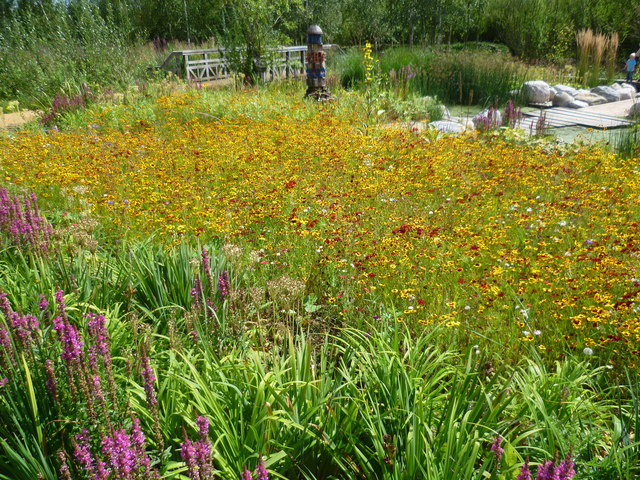Compared to a conventional lawn, rain gardens allow for 30% more water to soak into the ground.
.
Following on from a damning parliamentary report on the (lack of) quality of the water in our rivers, there have been calls for ‘citizen engagement’
Water quality report: ‘routine pollution in our rivers’ – Vision Group for Sidmouth
Private citizens and local communities can indeed do their bit.
For example, point 307 of the report mentions rain gardens: these small gardens in a depression are designed to slow water run-off and assist in relieving the pressure on our sewerage system after heavy rainfall.
Most of the examples are from the States:
A rain garden is a garden of native shrubs, perennials, and flowers planted in a small depression, which is generally formed on a natural slope. It is designed to temporarily hold and soak in rain water runoff that flows from roofs, driveways, patios or lawns. Rain gardens are effective in removing up to 90% of nutrients and chemicals and up to 80% of sediments from the rainwater runoff. Compared to a conventional lawn, rain gardens allow for 30% more water to soak into the ground.
groundwater.org/action/home/raingardens
Soak Up the Rain: Rain Gardens | US EPA
Here’s an example from the UK, from ten years ago, on a larger scale:
RBC Rain Garden at the London Wetland Centre

Nearly a year after it opened (see Link the Rain Garden (funded by the Royal Bank of Canada) is maturing well. In the photograph is one of the creature towers to provide habitats for insects and small mammals. They have been put together with a variety of materials from slates to sticks. To the right is the pond with a walkway across the middle.
RBC Rain Garden at the London Wetland… © Marathon cc-by-sa/2.0 :: Geograph Britain and Ireland